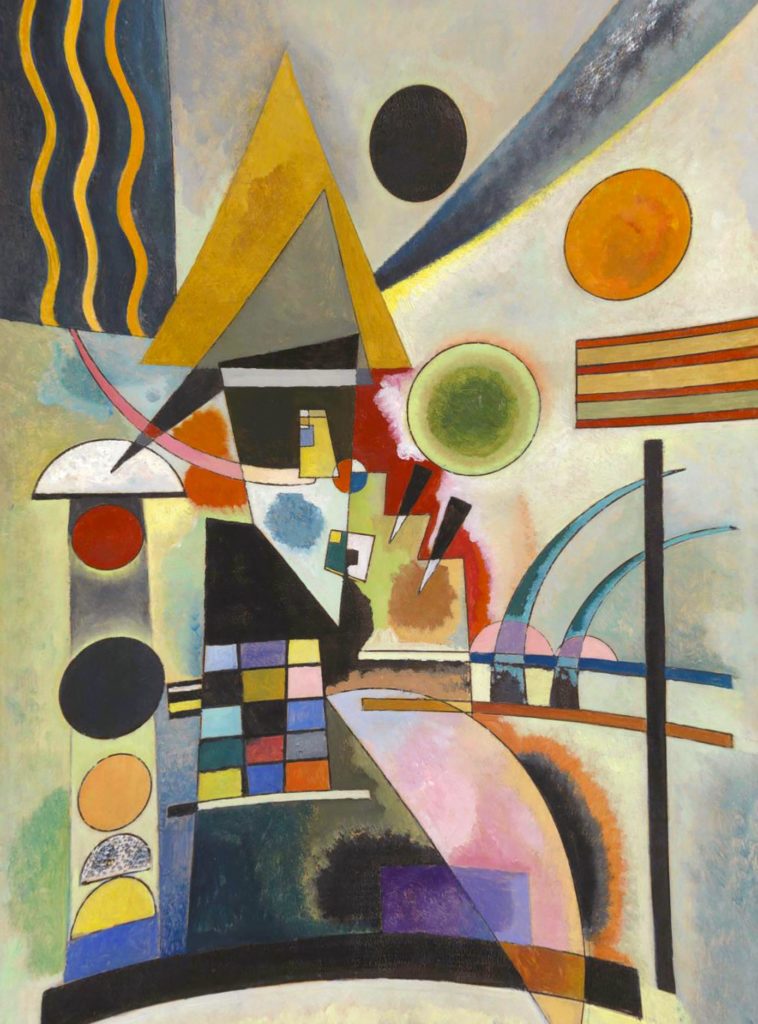
CLOWN TROUPES: A TROPE ON CREATIVITY
This blog essay has 3 sections that are juxtaposed but not directly integrated in the writing. You the reader will need to connect the dots and find your own meaningful relation between the themes: a) Clown Troupes a few favourite examples; and, b) a 2-pages excerpt on confusion or consternation about contemporary Clowns; and, c) using the painter and art theorist Kandinsky as one favourite example of the true or complex nature of Creativity.
I have several favourite clown troupes. The words clown and clown troupe I use with a broad palette as in colour selection; and palate as in taste.
I do not have a favourite clown nor do I have a favourite type of clown. I really like a wide range of clowns. Perhaps I have ‘one hundred’ favourite clowns?? Shakespeare’s canon of 37 plays has a wide range of perhaps 100 or so clowns. Many of the clowns are not named as such yet are distinctly clown types provided one defines Clown as I do, with a breadth of unexhausted variety of possibilities. A narrow definition of Clown means that the other 90% of Clowns don’t fit in, even though they too are clowns.
Additionally, some of the very greatest Clowns do not consider themselves to be a Clown and in fact many such performers also openly dislike Clowns.
Danica Hilton, formerlly a teeterboard acrobat in Cirque du Soleil, came to my home to discuss her role as Pierrot for our planned project that she instigated to occur in Tuscany, Italy. Shortly before she arrived Danica visited a used bookstore nearby and saw the book Clown Paintings and said I might be interested. I bought the book that day.
The Clown/Actress Diane Keaton created Clown Paintings. It is now one of my favourite books about Clowns. Keaton created rather than wrote the book. The book is about her passion which I share in the deep appreciation of kitsch paintings of Clowns. Keaton’s colleague in this passion, the art collector Robert Berman, who has over 1000 kitsch clown paintings wrote the Afterword: that there are very bad, bad clown paintings, but, there are also very good, bad clown paintings.
Keaton shares only a few pages of her profound thoughts. In the book she provides just a few dozen of her 300+ kitsch clown paintings in her collection . Additionally and significantly Keaton asked some of her funniest friends, most of whom are types of Clown-Actors, for their thoughts about Clowns. At the end of this blog is the link to an excellent article about Keaton’s book and collection.
Here are just a few of my favourite Clown Troupes with their Founder’s name. Afterwards I will write a few comments regarding each. Then tangentially to those wonderful individual Founders afterwards will be juxtaposed the topics of Clown, and, Creativity. The ideas in this blog essay are about Clown, and, Creativity generally. Mimicing Albert Einstein’s great title “The General Theory of Relativity” the relation between Clown Troupes, Clown, and Creativity is a relative theory.
This short list of six troupes is not in any order of preference. They are presented together to hint at the diversity of approaches and aesthetics of clown troupes.The word ‘troupe’ derives from Old French and meant a flock as in a flock of birds. In this blog essay’s title is a play-on-words with ‘trope’. An online definition for ‘trope’ is: Derived from the Greek word tropos, which means, ‘turn, direction, way,’ tropes are figures of speech that move the meaning of the text from literal to figurative. Generally I use ‘clown’ and ‘clown troupe’ figuratively.
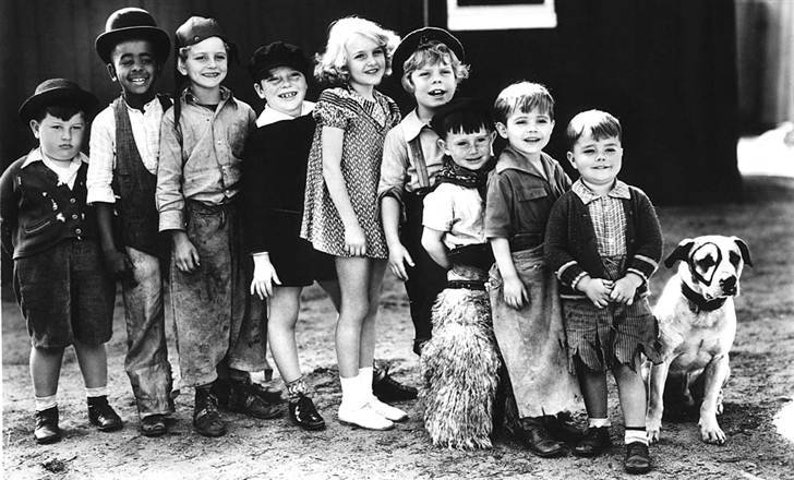
A SELECTION OF SIX CLOWN TROUPES
Slava’s Snowshow – Founder Slava Polunin, created in collaboration with several of his oldest colleagues in art, design, stage direction, comedy, theatre, and clown. https://slavasnowshow.com/en/
La Compagnie du Hanneton – Founder James Thierrée – his company is a tangent and evolution of and from his Parents company Le Cirque Invisible (earlier known as Le Cirque Imaginaire). For many years Thierrée’s mother, Victoria Chaplin, directed his early shows of Compagnie du Hanneton. Victoria also directs and designs the shows of her daughter Aurelia Thierrée. https://compagnieduhanneton.com/en/company
The Crackup Sisters – Founder Amanda-Lyn Pearson – Pearson as a youth trained in Equestrian and Stock Horse Riding; Classical Piano; and Classical Ballet. At the age of 19 she had her own hip-hop dance company and began performing as a Clown character “Blade” a raconteur on roller blades, and on stilts. https://crackupsisters.com.au/
La Cooperative 326 – Founder Jean Lambert-Wild – Lambert-Wild is an autodidact and polymath. He studied Philosophy at l’Université de Lyon III. With a focus on Plato, Seneca, Gombrowicz. He has worked in collaboration with Malaguerra & Associes. https://www.lambert-wild-malaguerra.com/en
The Wharf Revue – Founders: Jonathan Biggins; Phil Scott; Drew Fortsythe; and muse of recent years Mandy Bishop. The Wharf Revue is political satire and musical cabaret. Each year is a completely new production.
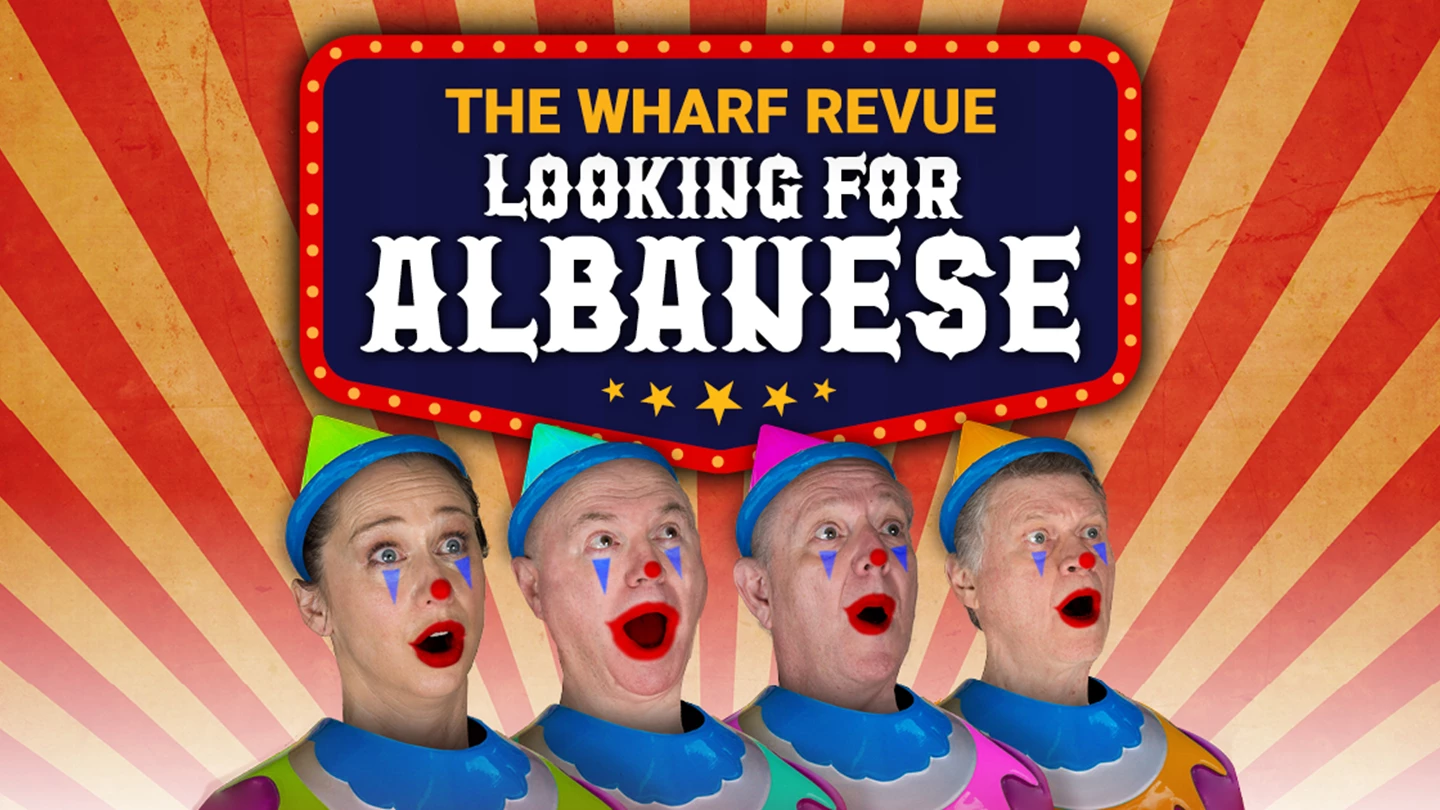
NEW – The Improvised Musical – Founder Florian Bartsch. Bartsch trained as a musician. For many years he was part of the performance collective Improfessionals (Directed by Caspar Schjelbred of Impro Supreme). Bartsch and Schjelbred are Co-Directors of Impro Academy Paris.
The six troupes that I have selected are drastically different one from the others. They have no commonality in their visions nor aesthetics. There is no such thing as a show that pleases everyone. A show may please everyone who comes to see it, yet, more people are not interested in any particular genre of theatre than are. Of course, many of those who are not interested may be interested if they did go and see a genre they may not normally enjoy. Whereas, the six troupes are so diverse that a person would have their own preference of which genre or aesthetic. Personally, I love the work of all six.
Slava’s Snowshow (the show and troupe are commonly known by the public as ‘Snowshow’) and La Compagnie Hanneton (the company is usually referred to by the public as ‘James Thierree’) are world famous and each is non-verbal. Whereas the other 4 troupes; The Crackup Sisters; The Wharf Revue; NEW – The Improvised Musical: La Cooperative 326, have a rich and important verbal component within their shows. The Crackup Sisters are in English, with an Australian flavour and an added rural ‘spice’. The Wharf Revue is in English with an Australian flavour but one needs to have some awareness of local, national, international politics to fully appreciate their poignant and hilarious texts. NEW and La Cooperative 326 are in French, but, NEW also plays the same format in English. NEW company member, Perrine Megret, performs also in another type of musical clown troupe, Franglaise, also based in Paris.
Each troupe functions as a company in distinctly different ways which have evolved and will continue to do so out of necessity. As the saying goes “Necessity is the mother of invention”. Creative solutions to the complexities of managing a troupe and company must evolve continuously. Each company and founder(s) are involved with developing their own company aesthetic. A company aesthetic is quite different than the corporate idea known as “branding”. Company aesthetic and branding exist concurrently but are valuable in different domains. A company aesthetic is valuable on stage inside the actual art form, whereas branding is valuable in the necessary commercial marketing.
The trouping nature of each company would be quite different as each operates in different situations. Some have a fluidity in personnel involved on stage. Actors have individual needs which change as years pass by. Each troupe notably has a strong leadership. Of the six companies some have a much greater financial security acclimatised to the situation of touring actors and production team in particular housing them in appropriate i.e. excellent hotels. Whereas, for example, The Crackup Sisters tour primarily to regional Queensland locations and that means motels rather than hotels. Plus their touring involves driving immense distances.
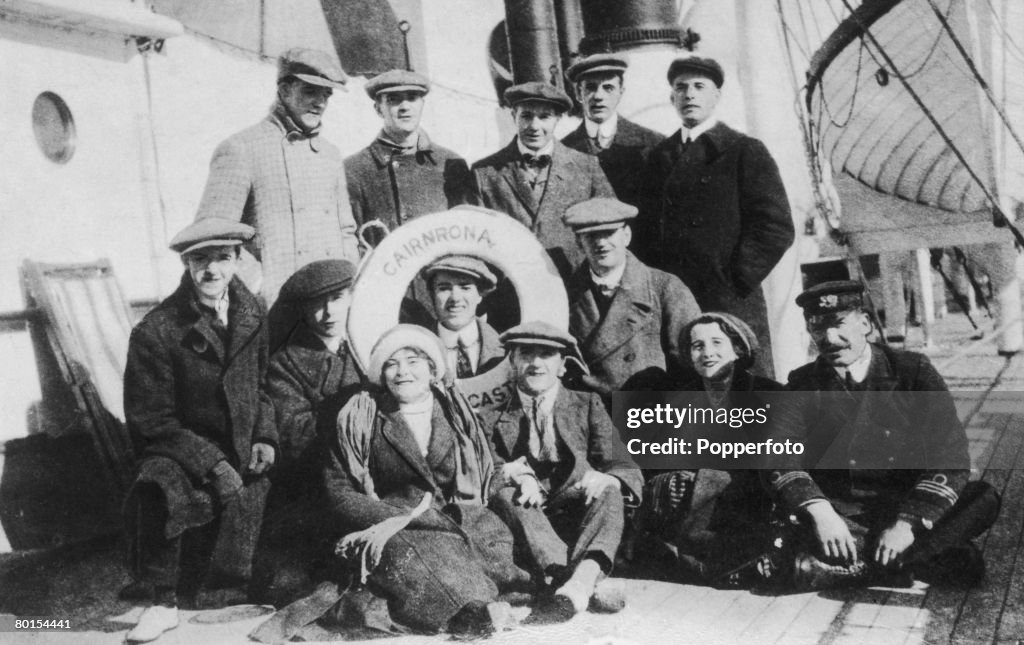
TROUPING
Long ago, Australian ballerina Valrene Tweedie auditioned in Sydney for Col. Wassily de Basil and his Original Ballet Russe in 1940. She was accepted at the age of 14. She began performing immediately under her ‘new Russian’ name “Irina Lavrova”. After performing in four major Australian cities the company went via ship to tour in the USA and South America for several years. Tweedie tells of the USA time in particular when in order to survive financially there would be 2 dancers per room registered at the hotels. However as they were a large group and the desk clerks couldn’t keep track, there would be 1 or 2 unregistered and un-paid for extra dancers in every room. That went on in every city. Basil’s Original Ballet Russe toured to 700 cities in 70 countries.
Touring in even the best conditions is still taxing and filled with challenges. One of my Mentors, Guillermo Keys-Arenas had been a dancer and then Tour Manager for Ballet Folklorico de Mexico for their USA tour that lasted around 3 years. He explained that there were 80 dancers plus a full orchestra and he said like the Australian saying “It was like herding cats”. Touring is by its nature a human drama. There is also a theatre saying “What goes on tour stays on tour”. Perhaps touring as a troupe, large or small, is a laboratory of human nature?
In many ways the ideal or fantasy of a performance company is to be a touring troupe. No touring troupe compares in difficulty to that of the traditional circuses in tents. The performers are also part of the crew for the labourous and knowledgable tasks of putting up and taking down a large tent that can hold 1000 or more people. As well as putting up and taking down the seating and all required equipment for the show itself, and much more. Then doing the performance. Many traditional circuses used to do many one-night stands. It is unfathomable to those of us who have not done such a huge undertaking.
This past week (January 2023) I was able to perform in Slava’s Snowshow while it was in my home city of Brisbane. The theatre itself had at least 20 technicians on stage rigging the lights and flies. The troupe was about 15 including: the Company Manager; a Tour Manager; Technicians; and Actors. The host theatres also provide about 8 to 15 technicians, during the performance, who must operate some of the various technical needs of the show. One of the numerous hidden beautities of Snowshow is that the company’s 4 technicians (2 behind stage and 2 operating lights and sound) are 100% integral to the whole show start to finish. There is a fluidly changing distribution of stage roles and props tasks for the actors. This fluidity seems to directly enhance the feeling and energy of a troupe rather than an “acting company”.
Le Compangnie Hanneton is related in that it is a complete form of clown theatre, yet completely different from Snowshow in that Snowshow’s interfluidity of roles is not really suited at least to the early works of Hanneton because the technical skills of Le Compangnie Hanneton’s actors were drastically different. Where as a classic Musical, which does work as a troupe, must have understudies and will always have at least one female and one male performer which are called “The Super”. The Super knows perhaps 5, 6, or 7 roles in the show and can immediately step in at short notice.
Certainly the six troupes founders and colleagues would have many ancecdotes regarding common ‘ailments’ of human, logistical, and technical matters. Each founder and troupe will have its own preferred or evolved or necessary ways of touring. “Trouping” was a common term for traveling actors ensembles. Such theatre troupes were common in many nations. The Commedia dell’Arte in theory was the ‘original’ trouping actors ensembles. The actual commedia troupes existed between the early 1500s to the late 1700s. The Yiddish Theatre which started formally in Jassy, Romania by Abraham Goldfaden in 1876 soon operated as touring troupes. Goldfaden “As a child, he is said to have appreciated and imitated the performances of wedding jesters and Brody singers (Brody, Броди Ukraine’s comical singers/actors) to the degree that he acquired the nickname Avromele Badkhen, “Abie the Jester.” (Sandrow, 2003). Thus, those troupes had a comic/clown element from the beginning. This of course was influenced as well from Purim Spielers which were Klezmer musicians and Clowned. Through Goldfaden’s efforts Yiddish Theatre took off as popular form of entertainment in Jassy. Then it took off on the road to Bucharest and then beyond to ignite many more people to also found their own Yiddish Theatre. In the USA in particular the Yiddish Theatre in NYC in the Lower East of Manhattan became a phenomenon even for non-Jewish and non-Yiddish speaking public. The Yiddish theatre in the Soviet time was Habimah and their legendary work The Dybbuk in particular affected the standard of modern acting. As their director, Vahktangov learned from those amateurs the natural state of trance acting and the power of cultural gestures. The Yiddish theatre combined: kitsch melodrama; with clowning; with questions of tradition vs assimilation; and, with political and social activism. Additionally the Yiddish Theatre was primarily either global traveling troupes or local communities. Orsen Welles said that he would like to reincarnate as a Yiddish actor. The British tradition for trouping actors goes back at least to the 1500s. From the late 1500s London became a hotbed for theatre, playwrights, actors, sponsors which later seeded an enormously influential standard for touring troupes. With Fred Karno’s Comedians specifically the most famous clown troupe of the late 1800s to early 1900s. The troupe in which Stan Laurel (Stanley Jefferson) and Charles Chaplin each veterans as child performers who under the gaze of Karno and guidance of his players Laurel and Chaplin blossomed towards their new beginnings in the stationary clown troupes of Mack Sennett and Hal Roach in Hollywood’s heyday of silent comedy.
Now, leaving Clown Troupes and jumping to tropes of Clown, and Creativity. First is Clown.

Of value in a discussion about Clown, and Creativity the most legendary source in English prior to Chaplin and prior to Dickens is the canon of 37 William Shakespeare plays.
Virtually every one of those plays has a ‘clown’ even if the ‘clown’ is the protagonist, for example Richard III in the play Richard III. True he may be a grotesque and/or darker clown, but he entwines other characters into his web of buffoonery. I played what may be considered the main clown other than Richard III. That character is “The Comic Murderer”. I have written about that in another blog; in the book Clown Secret.; and, there are six essays on Shakespeare in the matching book Quantum Theatre: Slapstick to Shakespeare. The classic touring Shakespeare troupes were known as “Actor/Manager” Shakespeare Companies. The Manager (Director) was also an actor and would often play all or most of the protagonist roles.
One of the last such companies was Sir Donald Wolfit’s that toured to the Antipodes in the 1950s. Sir Donald was ‘mad as a hatter’ so to speak:) There was a play and movie made about his later years. The title of both was The Dresser. A dresser was often a costume person who helped with quick or elaborate costume changes. In Sir Donald’s case, his lifetime Valet was also his dresser. Although it is common of course also for actors backstage to assist each other with quick or elaborate changes. Provided the touring actors are still speaking to each other:)
I was in a revue style show with 6 dancers , and an old English comedian living in Auckland, Doug Aston, and myself as the young slapstick comedian and sidekick to Doug. One of our duets was with top hat and cane, singing and strolling a la “Flanagan and Allen” . Doug and I sang both “Underneath the Arches” and “Me and My Shadow”. There was one quick change for Doug and for that I was officially his dresser. One evening he came in completely disheveled and forlorn with a glazed look in his eyes. I asked if he was okay? He said in a whisper: “No, i’m not. I’ve just been to see The Dresser”. I did not really know about the movie nor the play nor Sir Donald Wolfit. Yet. Doug was miserable during our routines. When his quick change came…. it was a mini and short disaster as he mixed up the order several times and it was very much like dealing with someone with dementia or like Dr Oliver Sacks’ book “The Man Who Mistook His Wife For His Hat”. As ya do, we got through the show. The next afternoon I went to see the film, and understood what had terrified Doug.
A bit about Doug:
‘He was born in London. His mother, Nellie, was a Crystal Palace fortune teller. His father, Edward Aston, was a professional strongman. The young Doug cut his stage teeth in Boy Scout Gang Shows. Conscripted in 1939, Aston was a sergeant in the 8th Army for four years, seeing action at El Alamein in Egypt, Italy and at the D-Day invasion in Normandy. During the war he married and had a daughter, Pat. Aston wrote and performed in a number of shows during his war years and experienced his own pantomime when on leave mid-war, he ran into his estranged father in a London pub, who apologised over a pint for not marrying his mother. He had no idea his father was married to someone else during the comings and goings that produced three children. “And there I was – a grown man – finding out I was a bastard after all. Just as everyone suspected!”
Speaking of London, back to Shakespeare…..
An interesting question in the works of Shakespeare and perhaps many other plays is what happens to a straight character when they have to communicate with a clown? Shakespeare uses that situation numerous times in various plays. In a way, often the straight character is made a fool of by the clown. In other situations the clown is shown to have great weaknesses such as Falstaff’s lying about how many attackers he fought off. See photo below Sir Antony Sher as Falstaff in that scene telling about the attackers he claims to have fought off. In other situations such as King Lear and the Fool, the fool is shown to be both wise and empathetic towards the King, although that varies in interpretations production by production.
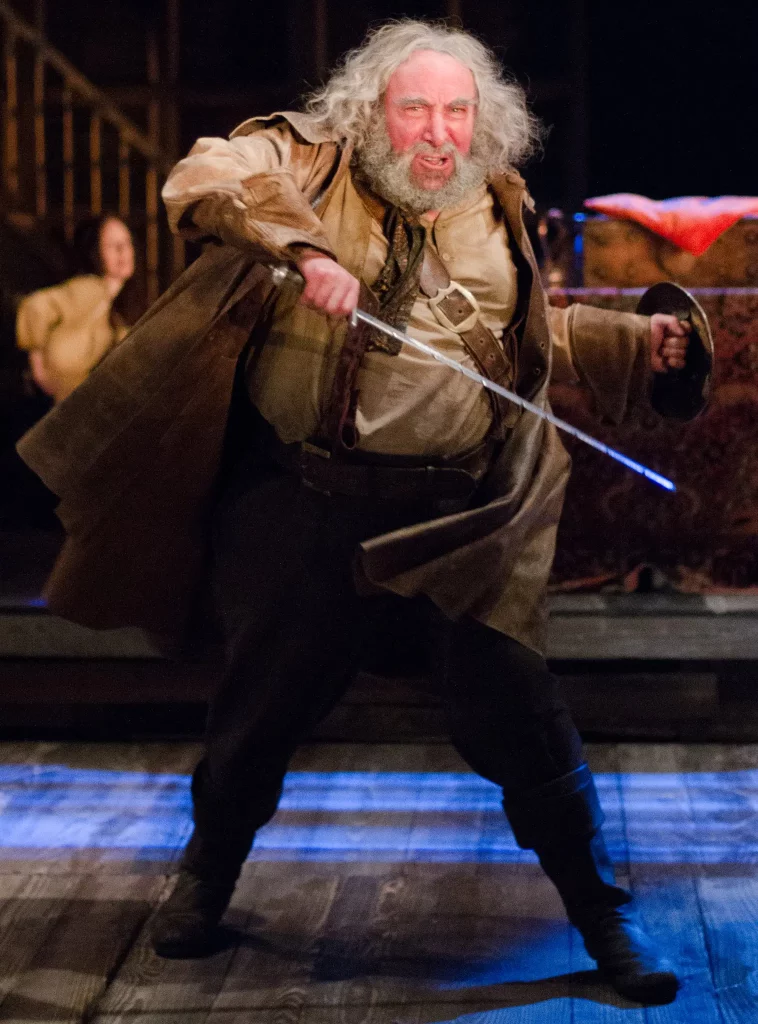
Here are two pages regarding a few aspects about Clown, extracts from Clown Secret.
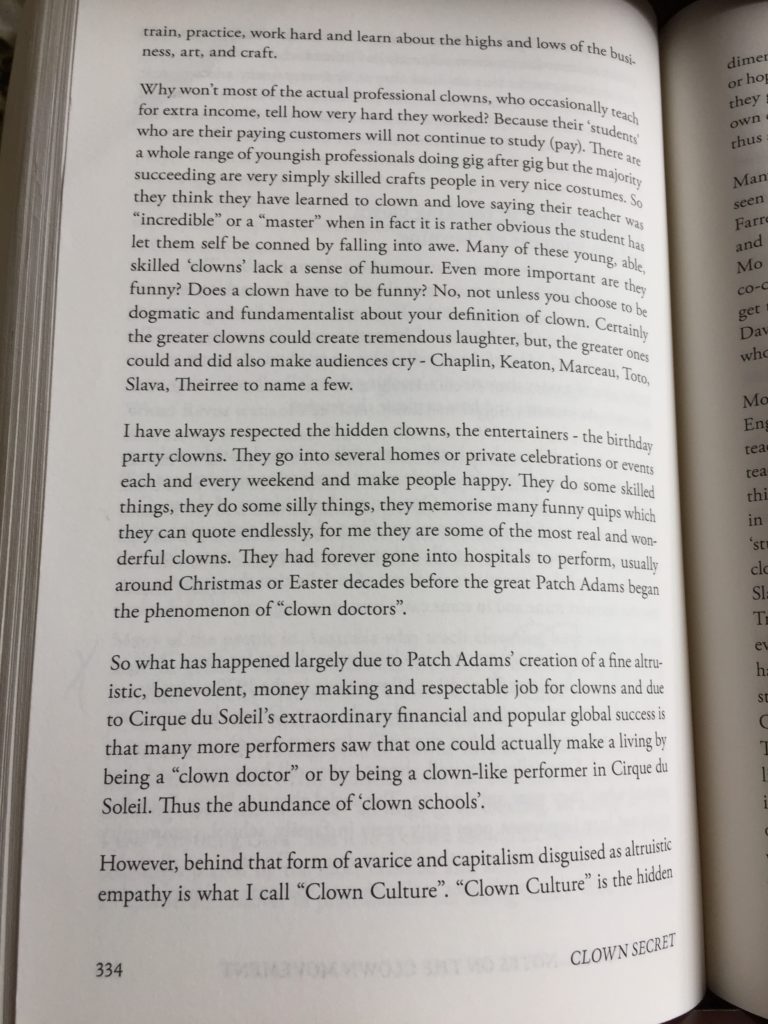

Leaving Clown and jumping to a trope about Creativity. This is an extract from an online academic paper by Sourav Roy – Origin Analyses of Wassily Kandinsky’s Abstraction: Thoughtforms, Synesthesia and Psycho-Aesthetic Theories. With the application of three distinct planes of analysis – one visual, one neurological and one theoretical – the author attempts to shine a light on the fraught origins of Kandinsky’s early abstraction. In Conclusion I would propose that the six founders of the six Clown Troupes were thinking or experiencing the trope (way) of combining their abilities as entertainers and visual artists and conceptual thinkers. As a small example Florian Bartsch’s NEW – The Improvised Musical has since its inception employed as a stage performer in addition to the actors/singers, the musicians, the conductor (usually Bartsch) and a visual artist who does live cartoon animation projected onto a huge stage screen. The audience thronged to the monthly performances and literally was throbbing like an audience at an upbeat music concert. I saw one of the first performances of NEW and it was wonderful and lively. Perhaps a year or so later I saw NEW again but it already had a following and the audience packed in and at least 100 people were also sitting in the ailses on the floor! A few years later I saw NEW at the famous Bobino Theatre, one of its larger side venues. By then the NEW team and aesthetic had long gelled and it was literally an utterly brilliant Clown show albeit one with its own aesthetics. But the intimacy and reactions with the audience proved it was really a Clown show.
Here is the extract from Sourav Roy:
Page 16 “But dismissing the connection between synaesthesia and higher-consciousness as mere self-
aggrandizing will be too hasty. The latest medical research suggests that there is indeed a
correlation between Synaesthesia and creativity because the phenomenon is eight times more
common in people with a creative bent of mind. Provided of course, we define creativity as an
ability to combine two seemingly unrelated ideas and we consider creative people as higher
beings. The same region of brain, Angular Gyrus, that handles metaphor and intermodality
abstraction is also the region where higher synaesthetes are overwired. This overwiring, that is
not an exception but a convention for all infant brains, suggesting we are all born synaesthetes,
is brought down by pruning genes over the course of most of our adulthoods, rendering us non-
synaesthetes. Considering that the inefficiency of this pruning gene for synaesthetes don’t
serve any utilitarian purpose, we can conjecture there must be some higher purpose to this,
even though that purpose might not be an easier access to the numinous.”
Regards from Ira Seidenstein, PhD. If you know others who may relate to my Blogs and work please Share.
www.iraseid.com for blog, Creative Mentorship. The pair of books: Clown Secret; and, Quantum Theatre: Slapstick to Shakespeare are available as Print-On-Demand via any independent bookseller; and via all major online booksellers. Also both books are available in minutes via Kindle.
